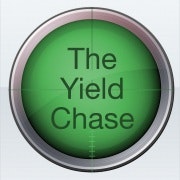Property will make a return in 2013
PORTFOLIO POINT: Low interest rates and increased demand are fuelling activity in different segments of the property market, and 2013 looks promising.
My expectation for property of most kinds is a bullish one. The reason is simple – interest rates are low and they are getting lower. That puts most commercial properties now in a situation where they are yield accretive and residential is not that far off. In other words, if you borrowed 100% and bought a property, the income after expenses would be more than the interest expense.
The Reserve Bank now wishes to see growth in at least the property markets (particularly residential) in order to soak up labour being laid off from the mining sector. In order for that to happen, the RBA will tolerate higher capital growth rates for real estate.
Indeed the interest rate cuts we have already had will eventually see acquisition yields fall for all property sectors as property prices are bid up over and above their respective rental growth. Further, it’s likely the banks will come to the party and happily provide credit to most of the property sector. Having a rise in capital growth will also strengthen their existing lending book.
Let’s discuss each of the sectors.
Residential
I have discussed the prospects of residential property substantially this year, and not much has changed on the outlook on this sector since my Housing Boom and Bust Report was released in September. Overall, conditions are favourable to home buyers and I expect capital growth next year somewhere between 4%-7%. Net yields are running at about 2%-3%, so total returns could be up to 10% in some locations. Given forecasts of about 5% rental growth, it means acquisition yields themselves are likely to stay flat over the course of the year.
Retail
Retail property has survived remarkably well given the downturn in consumer spending and the move to online retailing. That said, I am well aware of many suburban shops literally being closed down and boarded up, particularly in parts of Sydney such as the northern beaches and the inner west. Retailers in shopping malls have fared a little better, and hence the reason why the likes of Westfield group have held up this year. I believe the play here is not to buy directly but rather via a listed trust or unlisted property fund where the tenancy is strong. Yields are very attractive right now as a result of the risks in the sector. Going forward, a fall in the Australian dollar would greatly assist this space.
Industrial Property
Industrial has always tended to yield a little higher than retail or office and that has primarily been as a result of the ease to which new supply can be added. Yields on prime industrial space right now are between 8%-11%, making for a solid cash flow positive investment. Values this year have led up well as rents have continued to increase. As the banks have been reluctant to lend to developers in commercial for some time now, supply of industrial real estate has been tight. That, combined with a pick-up in imports, has helped this space. My tip is that yields will tighten in 2013 as demand strengthens further.
Office
Prime office yields have been hovering between 6.5% and 7% for the past two years now, and I only anticipate a marginal compression in cap rates for 2013. Vacancy rates for office are still elevated at about 8%, and this has meant rents are only growing at the same rate as inflation or even less. Nevertheless there is still interest in direct office due to the quality of the underlying assets. And, if the economy grows faster than expected next year, it should mean vacancy rates will fall with subsequent rents been squeezed upwards. For investors looking at this space, obviously it is nigh-on impossible to buy an office block unless you are an equivalent of a James Packer. But fear not, there are property syndicates and trusts out there on offer to investors which enable direct exposure to some of the best offices in the country.
Real Estate Investment Trusts have had a fantastic ride over the past 12 months, with compound returns in excess of 28%. Three-year returns have now averaged 12%. A-REITs will likely have another great year. I expect total returns to be in excess of 15% and that will be driven by increased payout ratios between rents and distributions. Due to the crash of 2008, which nearly saw the insolvency of a number of property trusts, managers rapidly scaled back distributions with some cancelling them all together. Now, with the banks no longer on their backs, managers are scaling up distributions, and with payout ratios still at only 70%-80%, there is plenty of room for them to move them up further in 2013. A comfortable ratio would be 90%, which still enables managers to keep on top of maintenance/capital expenditure requirements for the underlying properties.
But for those who don’t have time to research individual property stocks, I strongly recommend investing with an active fund manager; some of which have some very smart people who devote all of their time to follow this sector day-in day-out. Some managers this year have managed to beat the A-REIT index by as much as 9%-11%. In other words, some have been able to achieve returns in excess of 37%! But please do not expect this to happen every year, as it won’t!
Louis Christopher is managing director of independent property advisory and forecasting research house SQM Research.

















